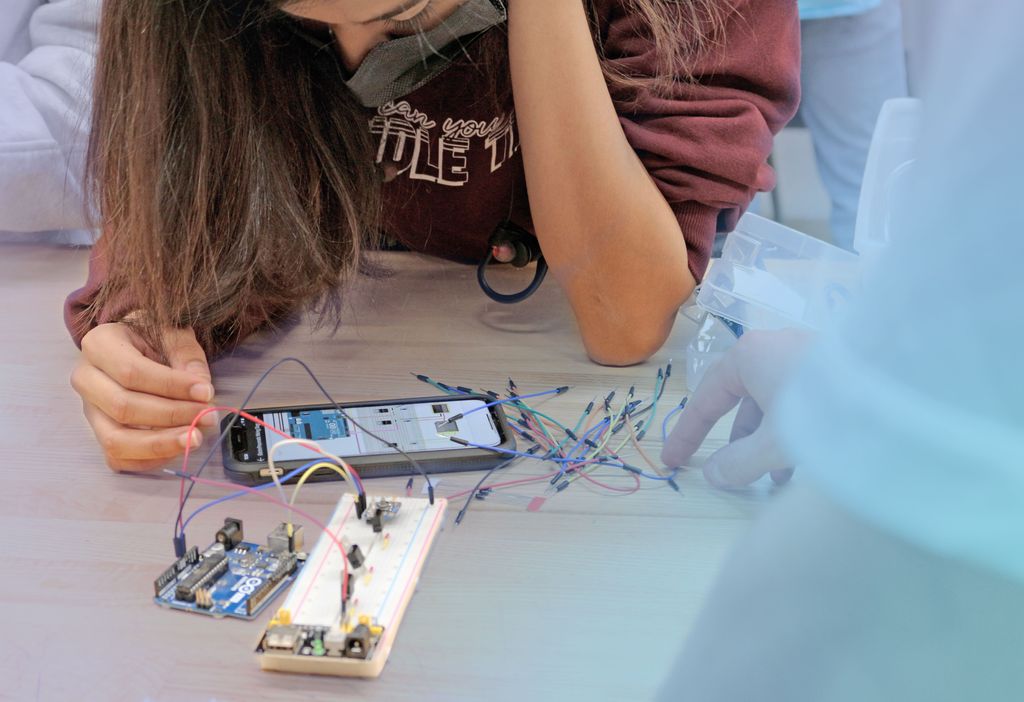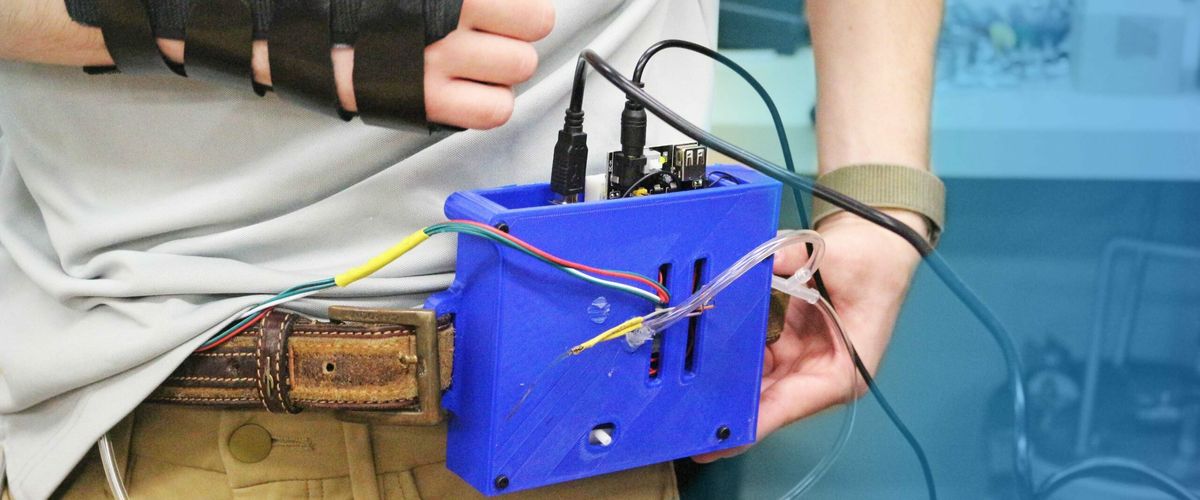Medical Devices
Sheila Russo is training tomorrow’s medical robotics pioneers
By Patrick L. Kennedy
Robotic-assisted surgery is not new. For two decades, some doctors have been performing surgeries from a console in another room, remotely controlling a robot that puts scalpel to flesh. Surgeons who use the technology say it allows for more precise movements and reduces the risk of infection.
But there’s a drawback: the lack of haptic feel. “You can’t tell if you’re applying too much pressure,” says Assistant Professor Sheila Russo (ME, MSE). “You can’t tell if you’re grasping an organ too hard. It’s like playing a video game with a joystick.”

To solve this problem, students in Russo’s graduate course Medical Robotics develop robotic solutions to restore haptic feedback—sleeves that will squeeze a surgeon’s hands to alert them when it’s time to halt. “When the robot is exerting a force on an organ or tissue, that force will be transmitted onto the forearm or the hand of the surgeon,” says Russo.
Last semester, for example, one team built a haptic feedback robotic sleeve that uses an electro-pneumatic pump to apply pressure to the surgeon’s wrist. The wrist pump is hooked up to a circuit board that is worn on a belt around the doctor’s waist and receives signals from the surgery robot. In addition to the tactile stimulus, the device includes a light that flashes red if too much force is being applied.
Says student team member Franco Julia Wise, “Say you’re performing an endoscopy. To avoid harming tissue this will provide a multi-modal way of receiving feedback: visual as well as touch.”
Such a robot could be adjusted for different types of surgery, notes Russo. “If you’re operating on the liver or a nerve, the surgeon would know how much force you could safely apply,” and could tune the device accordingly.
To fulfill the course assignment, the team focused on making the robot portable, comfortable, easy to use, and cheap. “It’s battery-powered, so you could walk around the room wearing this,” says student Nash Elder. “And it’s affordable. All of this would cost something like $50.”
That price would put the device within reach for smaller hospitals, the students point out, thereby spreading the benefits to more surgeons and patients.
 In a second hands-on project assignment, students made a cable-driven, soft robotic finger for robotic-assisted rehabilitation. This could be used to reduce mobility impairments and other types of disabilities caused by neurodegenerative diseases, stroke, or accidents. In the future, says Russo, the students could use the same principles to build an entire robotic hand or an exoskeleton.
In a second hands-on project assignment, students made a cable-driven, soft robotic finger for robotic-assisted rehabilitation. This could be used to reduce mobility impairments and other types of disabilities caused by neurodegenerative diseases, stroke, or accidents. In the future, says Russo, the students could use the same principles to build an entire robotic hand or an exoskeleton.
“They’ve become pretty independent,” says Russo. “I’m teaching them to multi-task.”
“We really did get experience in everything,” says Elder. “There’s the coding, the electronics, the mechanical engineering. These are complex projects.”
In addition to technical skills, students learn how to pitch their own concepts and ideas and apply for funding. “This course is designed to give students experience with the initiation of a new research project in the field of medical robotics, so it culminates with the students proposing and building their own medical robot that can solve a specific clinical problem they are passionate about,” says Russo. “They’re in grad school because they want to join industry or academia—either way, to do research and development”.

Russo knows a thing or two about R&D. Her latest publication, in Soft Robotics, presents a soft-robotic bronchoscope able to explore deep into the periphery of the lung, finding cancers that currently can go undetected.
Students say that Russo’s class has turned soft robotics for medical applications into a career prospect that is both realistic and appealing.
“Not many people can say they built a medical robotic device in the classroom,” says Wise. “I came to graduate school to change the path I was on and do something with more of a humanitarian focus, and this is exactly the class to do that.”
